There are a multitude of diseases, each with its own fancy-sounding diagnosis and corresponding drug. But as a doctor, I can tell you that virtually all major health conditions stem from one primary cause: chronic systemic inflammation.
It’s the silent trigger behind conditions as varied and seemingly unrelated as Alzheimer’s, asthma, heart disease, chronic pain, digestive disorders, diabetes and, you guessed it – cancer. But it’s also the one thing that conventional medicine consistently fails to address at its root cause. This is why millions of people are paying the price with their long-term health!
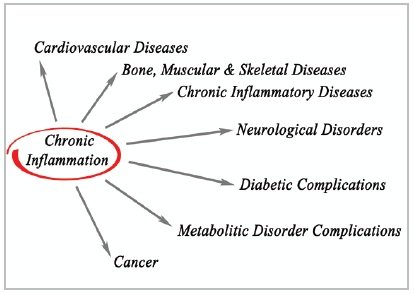
I’ll also offer other helpful tips on ways you can make better dietary choices to keep yourself on track to reduce your risk of cancer or any one of the other inflammatory diseases.
Defining Inflammation and Why Pharmaceuticals Aren’t the Answer
You’re probably already aware that the pharmaceutical industry offers all kinds of laboratory pills and “potions” for literally hundreds of diseases, many of which are caused by chronic inflammation. But what you may not know is that none of these synthetic chemicals do anything to actually halt what’s causing this inflammation in the first place.

While people generally recognize inflammation in the joints, it can be a “silent trigger” in other parts of the body
Instead, these lucrative poisons mask the symptoms of inflammatory diseases while allowing the body to quietly and progressively degenerate.They do this under the guise of “science-based medicine,” even though many pharmaceuticals actually make your health worse over time.
To be clear, localized inflammation, which is often acute inflammation, is a natural healing process that your body initiates in response to injury or infection. It’s the kind of inflammation that shows up as a fever in response to a bacterial infection, for instance, and is not the type of inflammation I’m discussing in this article.
On the other hand, systemic inflammation typically results from patterns of poor diet, lack of exercise, autoimmunity, and various other factors. This is a persistent, silent type of inflammation that, in many cases, can lead to ill health in the form of chronic disease and even premature death!
It doesn’t help to take synthetic pharmaceutical drugs for the health problems that arise as a result. These just mask or cover up the effects of chronic inflammation without addressing the root causes of the inflammation itself.
What ends up happening is a progressive weakening of your arteries, gut, vital organs, and other important systems. This in turn can lead to more serious health conditions like heart disease, inflammatory bowel disease, cancer, and more.
A much better option is to skip the drugs altogether and nip inflammation in the bud at its root cause by taking control and making some adjustments to how you live and eat.
Why Inflammation Occurs
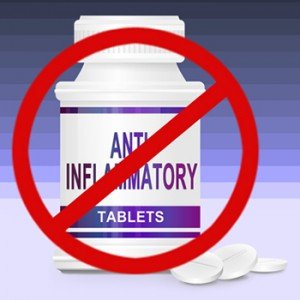
But when the body becomes overwhelmed by this trauma, the inflammatory response trying to fix it can persist indefinitely. Too many free radicals can lead to oxidative damage of the arteries, nerves, and other tissues, which is when serious health problems arise.
Concerning the role of your diet in this degenerative process, stop for a minute and think about the foods you eat on a regular basis.
Do you often eat out? What type of eating establishments do you frequent? What type of animal products such as meat, poultry, fish and eggs do they use? How is their food prepared and what types of oils do they cook with? And how much of your diet comes from packaged, processed foods?
These factors make a huge difference in whether or not your food is likely to provoke an inflammatory response in your body. When food ingredients are refined (stripped of their nutrients), chemically altered, processed and/or high heated, they tend to be inflammatory.

Processed foods contain a multitude of pro-inflammatory ingredients
Some of the worst offenders are present in almost everyone’s diet. Whether you live in America, India, or Australia, you are likely consuming vegetable oils that create inflammation – namely soybean, canola, cottonseed, sunflower, and safflower oils. Other major offenders that are also pervasive and that promote inflammation are factory farmed animal foods. I’ll go into detail later about both of these and why.
A Primer on Essential Fatty Acids
Vegetable oils tend to have an imbalanced ratio of essential fatty acids, or EFAs. EFAs act as structural components of cell membranes. As the human body isn’t capable of producing many of them on its own, these vital nutrients must be obtained through diet.
You can think of EFAs as the “grease” that keeps your cell membranes fluid, elastic, permeable (so nutrients can get in), and ultimately functional. EFAs also aid in cell growth and repair, without which your cells would starve and your body would be unable to produce vital living components such as red blood and immune cells.
But EFAs also need to be consumed at the proper ratios in order to provide these benefits, and vegetable oils and many other common foods just don’t fit the bill. Many of these foods are dominant in one type of EFA (the kind that’s highly unstable and leads to oxidative damage), while lacking in the other (the kind that protects your body against oxidative damage).
The 2 Types of EFAs
Let’s break down these two types of EFAs so you have a clearer understanding:
Omega-3 fatty acids – The primary Omega-3 fatty acid found in food is alpha-linolenic acid (ALA), which the body converts into the polyunsaturated fatty acids eicosapentaenoic acid (EPA) and docosahexaenoic acid (DHA). Both types are necessary for maintaining intestinal health and optimal production of digestive enzymes and bile.
The human body is capable of converting ALA into both EPA and DHA, but the conversion rate is generally very low (though the human body is good at adapting). Even so, eating foods high in EPA and DHA or supplementing is often the best option for individuals trying to keep their inflammation levels in check.
Omega-3 fats are what vegetable oils and many other processed foods generally lack.
Omega-6 fatty acids – Omega-6 fatty acids like linoleic acid (LA) and its derivative gammalinolenic acid (GLA) are prolific throughout the modern food supply. They’re especially prominent in vegetable oils, which are used in all sorts of processed, deep-fried, and convenience foods.
Salad dressings, mayonnaise, sauces, and almost every processed food you can think of contain these pro-inflammatory vegetable oils. In addition, practically everything cooked at a restaurant with oil contains high Omega-6 vegetable oils (mostly soy oil and canola oil). Even your typical health food store carries hundreds of processed foods with these vegetable oils.
Many so-called “healthy” restaurants are also using these oils either to cook with or as an added ingredient in the case of prepared foods. It’s a main ingredient in their salad dressing too!
Moreover, these oils become even more toxic when cooked at high temperature, which is generally the case in restaurants. In addition, high heat is often used in the processing of canned, bottled, and packaged foods. You must know that if a food is fried, stir fried, or sautéed and it’s served in a restaurant or sold at a grocery store, chances are it contains toxic, high Omega-6 vegetable oil.

High heat + vegetable oils make deep fried foods especially harmful to your health
Because of the combination of intense high heat and the ability of the food to easily absorb these toxic oils, fried foods might be the worst cancer-causing offenders. This includes french fries, doughnuts, fried chicken, fried fish and seafood, etc. I have even found that many veggie burgers are fried.
Additionally, Omega-6-dense oils are often stored for long periods of time, causing them to turn rancid. The combination of frying and rancidity make oils that are already toxic even worse by introducing damaging free radicals, which oxidize your blood and cholesterol, and lead to conditions such as heart disease.
While Omega-3 and Omega-6 fats are both essential for health, the standard Western diet is overwhelmingly high in Omega-6s compared to Omega-3s. Science has shown this to be a leading driver of inflammation due to the fact that Omega-6 competes with Omega-3 in the conversion of ALA to EPA and DHA, which are necessary for protection against inflammation and disease.
Here’s what researchers from The Center for Genetics in Washington, DC, found when evaluating the role of Omega-3s and Omega-6s in a healthy human diet:
Excessive amounts of omega-6 polyunsaturated fatty acids (PUFA) and a very high omega-6/omega-3 ratio … promote the pathogenesis of many diseases, including cardiovascular disease, cancer, and inflammatory and autoimmune diseases, whereas increased levels of omega-3 PUFA (a low omega-6/omega-3 ratio) exert suppressive effects.
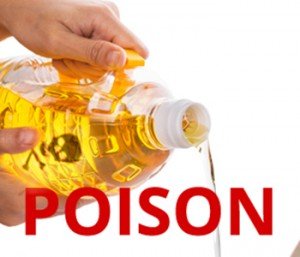
Already harmful vegetable oils (soybean, canola, cottonseed, sunflower, and safflower oils) also often contain GMOs
Another thing to remember is that many vegetable oils are genetically-modified (GMO), a process that comes with its own set of inflammatory-related health risks. Animal studies have linked GMO consumption to intestinal inflammation, kidney and liver damage, and breast tumors.
The general consensus is that the optimal ratio of Omega-6 to Omega-3 fats is 1:1. Keep in mind that the typical Western diet holds a ratio of around 15:1, which explains why systemic inflammatory diseases are so chronic and rampant in today’s society.
Anti-Inflammatory Fats and Oils
It’s been shown that balancing this ratio as closely to 1:1 as possible helps reduce disease risk as well as reverse disease progression in practically every disease category, from heart disease to breast cancer. Replacing foods high in Omega-6 fats in your diet with the following Omega-3 rich foods, oils, and fats can help you accomplish this ratio.
Grass-fed butter – Saturated fats like butter are beneficial in quelling inflammation and protecting the heart. Cattle that spend their lives on grass pastures rather than in confined (factory farm) feedlots produce butter that’s higher in Omega-3s and “good” cholesterol, and lower in Omega-6s.
Grass-fed butter is also rich in anti-inflammatory compounds such as:
- Butyrate, a small-chain amino acid that promotes healthy digestion and energy production.
- Conjugated linoleic acid (CLA), a long-chain amino acid that suppresses inflammation and prevents cancer growth.
- Retinol, a fat-soluble form of vitamin A that acts as an antioxidant to promote healthy immunity, vision, and neurological function.
- Vitamin K2, a vital nutrient for metabolizing calcium. Poor calcium metabolism is a major risk factor in the development of cancer. (Not to be confused with K1, which is present in green leafy vegetables.)
- Vitamin D, a critical nutrient in the prevention of cancer and other chronic diseases.
A solid choice that you can find at nearly any grocery store or health food store is Kerrygold Natural Irish Butter. Derived from cows fed a diet of 100 percent grass (and 100 percent fresh grass 10 months out of the year), Kerrygold butter is a beautiful golden color, which is indicative of its high nutrient content.
Another great choice if you can find it is Anchor Butter from New Zealand. Cows in this part of the world are raised in strict accordance with how nature intended 365 days a year – eating green grass rather than genetically-engineered corn and soy feed.
Another option is to go to local farmers markets and explore a CSA (community supported agriculture) where you purchase a small share in a farm for a season or two. Many of these farmers will have grass-fed butter for sale. Another option is to go to RealMilk.com and look for a farm near you. Many of the farmers will come to your area and deliver at a drop off point where you meet them at a specific time and day each week.
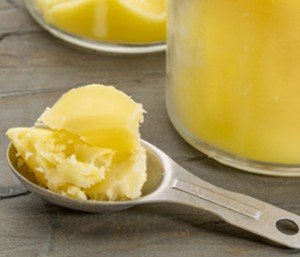
Ghee is a type of clarified butter that can be used to cook with at high heat
Ghee – Most people who have trouble with dairy products seem to do fine with grass-fed butter as a staple source of healthy saturated fats due to the fact that it contains almost no lactose and minimal casein (a protein found in dairy products). But if you’re particularly sensitive and need a safer alternative, ghee, or clarified butter, from grass-fed cows is another top pick.
Ghee is essentially ultra-purified butter that’s great for cooking at high heat (it won’t burn like butter does) and doesn’t spoil. It’s also rich in anti-inflammatory vitamins A and E, as well as K2 and CLA.
Pure Indian Foods sells a fantastic cultured ghee product made from the milk of organic, grass-fed cows. The company tests every batch of ghee to guarantee that it contains no more than 0.25% lactose and 2.5 parts per million (ppm) of casein and whey.
You can also pick up Organic Valley Purity Farms Ghee at practically any local health food store. Both of the brands of ghee I recommend use no-GMO in their feed and come from cows raised on pasture rather than in feedlots.
Coconut oil – If animal products are off limits in your diet, coconut oil is another healthy saturated fat that’s anti-inflammatory by nature. Coconut oil naturally contains high levels of medium-chain triglycerides (MCTs) that are absorbed directly into the liver for quick and efficient energy production.
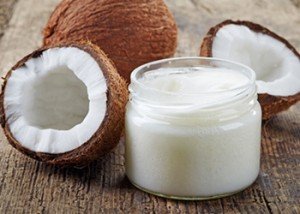
- Extra-virgin coconut oil is unrefined and tastes like coconut, so it works well as a spread or in recipes where coconut flavor is desirable. In particular, it goes well in soups and smoothies.
- Expeller-pressed coconut oil is often refined and doesn’t have a coconut taste, making it more versatile in all sorts of foods.
Arguably one of the best options for clean, pure coconut oil in both forms is Tropical Traditions. This family-owned company takes pride in everything it sells. They have even launched a “Glyphosate Tested” certification program to reassure its customers that nothing it sells contains toxic pesticides and/or herbicides.
Some other great sources for coconut oil include Wilderness Family Naturals, Dr. Bronner’s, and Nutiva. The latter two brands are available in many natural and organic grocery stores throughout the US.

Red palm oil is rich in both EFAs and fat-soluble antioxidants.
Palm Oil – Much like coconut oil, palm oil from sustainable sources is a great alternative to conventional vegetable oils. Not only does it remain solid at room temperature (which makes it a great choice for trans-fat-free cooking), but it’s exceptionally healthy and quite delicious.
A study published in the Journal of Inflammation found that red palm oil is particularly rich in both EFAs and fat-soluble antioxidants. The white kind is also beneficial, containing high levels of heart-protecting MCTs, much like coconut oil.
Nutiva sells an excellent “superfood” shortening that contains a blend of both palm and coconut oils (and no trans fats!). They also have a red palm oil product that’s rich in both beta-carotene (the vitamin A pigment that makes sweet potatoes and carrots orange), and lycopene, two anti-inflammatory, anti-cancer nutrients.
Inflammation and Cancer: Choose Anti-Inflammatory Foods
There’s an entire category of anti-inflammatory foods that naturally contain disease-fighting nutrients such as Omega-3s. First I’ll cover animal foods and then plant sources.
Animal Sources of Omega-3 Fats
When it comes to Omega-3 fats, almost nothing beats oily, fatty fish like wild salmon. Wild salmon especially contains high levels of both EPA and DHA, which I previously mentioned are critical for addressing and eradicating inflammation.
These two nutrients are hard to come by in the modern food supply. So finding them in the few foods where they exist naturally is one of the best steps you can take to help minimize your risk of developing an inflammatory condition like cancer.
You can find some of the highest known levels of EPA and DHA in sardines, fish oil, eggs (from pastured poultry), and dairy (from pastured animals). High-quality fish and marine oils like those sold by Green Pasture also work as a great supplemental source of EPA and DHA when food sources are limited.
The following is a breakdown of the top fish sources of DHA and EPA. I recommend eating at least 2-3 servings per week of these Omega-3-rich animal foods.
- Wild Salmon from Alaska
- Herring
- Mackerel
- Anchovies
- Sardines
- Trout
- Mussels
- Sea Bass

Buy wild (not farmed) salmon for an excellent source of Omega-3.
My recommendation is to choose only wild varieties of these fish rather than farmed, as farmed fish are often contaminated with pollutants and lack many of the anti-cancer nutrients found in their wild counterparts.
Carlson Labs sells a full line of both liquid and encapsulated fish oils that are derived from anchovies, sardines, mackerel, and cod liver. All Carlson Labs products are tested for safety and purity, and rank among the highest quality in the industry.
It’s important to remember that while pastured eggs and grass-fed meat (beef in particular) are great sources of both ALA and DHA, neither of these foods contains adequate amounts of EPA. So you need to obtain EPA from fish, fish oils, and other marine sources.
Meat and eggs are good sources of Omega-3s and it is critical that you get them from grass-fed and pasture raised animals, preferably fed pesticide-free and non-GMO feed.
Animals that are raised on factory feedlot farms are fed predominantly soy and corn that is also genetically modified. These foods are unnatural for these animals and they remain sick most of their lives. It also massively increases their Omega-6 to Omega-3 ratio so that these foods (meat, chicken, eggs, etc.) become pro-inflammatory.

Chickens in a factory farm
In addition, these animals are usually pumped up with artificial hormones and, because they are sick, are given antibiotics. You ingest these toxins every time you go to a restaurant that serves factory farmed animal foods while simultaneously increasing your consumption of inflammatory Omega-6 fats. Sadly, this is most restaurants.
Plant Sources of Omega-3 Fats
Unfortunately, EPA and DHA don’t occur naturally in plant-based foods. You can still find quality sources of ALA, some of which (as little as five percent) is broken down by the body into both EPA and DHA.
ALA is present in many nuts, seeds, vegetables, legumes, and even grains. It is also found in small amounts in vegetables such as kale, spinach, Brussels sprouts, broccoli, bok choy, cabbage, and cauliflower. (Actually, pretty much anything green contains some Omega-3 fats.)
By no means are these the best sources of inflammation-fighting Omega-3s. But if fish and fish oils aren’t an option, or if you’re simply trying to introduce more inflammation-fighting foods into your diet, the following options rank as top choices for ALA:
- Chia seeds
- Walnuts
- Flaxseeds – by far the highest with 22.8 grams of ALA per 100 gram serving
The Best Way to Use Flaxseed and Flaxseed Oil
Flaxseed is without a doubt your highest source of plant-based Omega-3 fats. Flaxseed needs to be ground or taken as an oil to gain its benefits. However, flaxseed has a relatively short shelf life as the polyunsaturated fat deteriorates rather quickly. As such, ground flaxseed or the oil easily oxidizes, setting off a series of free-radical reactions that promote inflammation.
Pre-ground flaxseed and flaxseed oil turn rancid faster than whole flaxseed as their unsaturated fats are far more exposed to oxidation. Therefore it is best to grind your flaxseeds just prior to using.
How to Grind Flaxseed
Two of the easiest methods for grinding are to use a simple coffee grinder or a blender. Make sure your blender is completely dry. I use a Vitamix blender which makes it easy for clean up as I grind the flaxseeds I need for the smoothie I make. If you want to store your ground flaxseeds, use a sealed, dark container and place in your refrigerator or freezer for one day only.
Tips for Storing Flaxseed Oil
If you use flaxseed oil, it is wise to squeeze in liquid gel caps of vitamin E mixed tocopherols or astaxanthin in the flaxseed oil bottle to act as a natural preservative and anti-oxidant. (Use 1 to 2 gel caps for every eight ounces of oil). To further prevent oxidation, buy flaxseed oil in smaller, eight ounce bottles rather than the larger ones.
Before purchasing, look on the bottle for the date of pressing and expiration and choose one that is as close to the pressing date as possible. Always buy brands that are cold pressed and that use an opaque bottle. Keep flaxseed oil refrigerated and keep track of usage and date on the bottle. It is best to use within 30 days of opening.
What About Vegan Sources?
As an aside, some supplement manufacturers sell 100 percent vegan oils derived from algae that they claim are comparable to animal sources when it comes to EPA and DHA content. You should know that many of these products are made from genetically-modified algae using artificial modifications, radiation, chemicals, and other additives. These products should be avoided.
Coming Up in Part 2 of The Truth About Inflammation and Cancer
In Part 2 of this series on inflammation and cancer, we’ll talk more about food and lifestyle factors that affect your body’s inflammatory responses. I’ll discuss how you can test and monitor inflammation, and tell you about specific natural substances that can help to significantly quell inflammation – thereby reducing your cancer risk as well as other diseases such as heart disease, diabetes, and Alzheimer’s.
Editor’s Note: This article was initially published in 2017 and has been updated in November 2023.
Article Summary
Virtually all major health conditions stem from one primary cause: chronic systemic inflammation. It’s the silent trigger behind conditions as varied and seemingly unrelated as Alzheimer’s, asthma, heart disease, chronic pain, digestive disorders, diabetes and cancer.
Anti-inflammatory medications can actually make your health worse over time by masking the symptoms of inflammatory diseases while allowing the body to quietly and progressively degenerate. A much better option is to address the root cause of inflammation by making adjustments to how you live and eat
When food ingredients are refined (stripped of their nutrients), chemically altered, processed and/or high heated, they tend to be inflammatory. Two of the most common inflammatory foods are vegetable oils – namely soybean, canola, cottonseed, sunflower, and safflower oils – and factory farmed animal foods
There are 2 types of Essential Fatty Acids (EFAs): Omega-3 and Omega-6. While Omega-3 and Omega-6 fats are both essential for health, the standard Western diet is overwhelmingly high in Omega-6s compared to Omega-3s. Science has shown this to be a leading driver of inflammation.
Replace vegetable oils high in Omega-6 fats in your diet with the following Omega-3 rich oils & fats:
- Grass-fed butter
- Ghee
- Coconut oil
- Palm oil
Eat at least 2-3 servings per week of these Omega-3-rich animal foods.
- Wild Salmon from Alaska
- Herring
- Mackerel
- Anchovies
- Sardines
- Trout
- Mussels
- Sea Bass
If fish and fish oils aren’t an option, the following options rank as top plant-based choices for ALA (the primary Omega-3 fatty acid found in food):
- Chia seeds
- Walnuts
- Flaxseeds – by far the highest with 22.8 grams of ALA per 100 gram serving











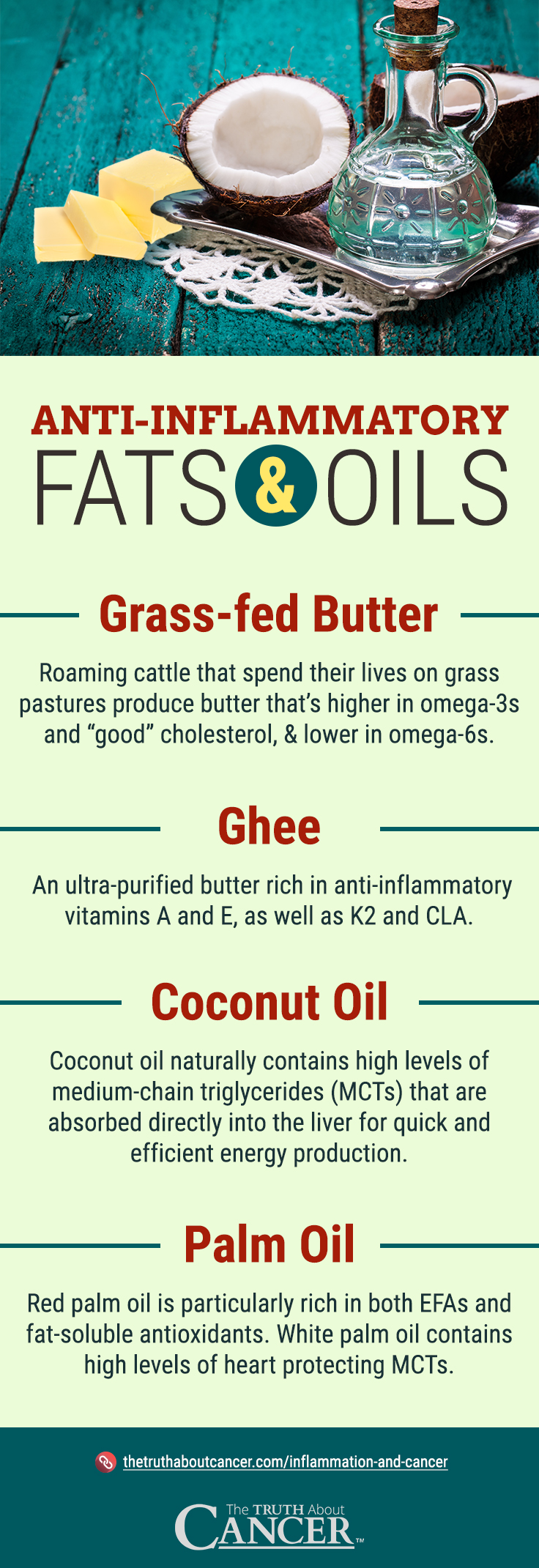








I am so confused about healthy fats now. You say to have saturated fats like grass fed butter and coconut oils to fight cancer. But if I have that then I will be at increased risk of heart attack (https://www.healthline.com/nutrition/optimize-omega-6-omega-3-ratio#section4). The only thing you both agree on is that flax seed and fish oil is good, but no one could stand to cook in these oils. So I always heard Olive oil is great because it is monounstarated but not high in Omega 6s and instead has mostly Omega 9s, Right? Please help me understand how all these fats in my diet can work together to be both good for my heart and fight cancer cells (ie. inflammation, oxidation, glycation, and angiogenesis). Any help you can provide would be great. Thank you.
Watch “The Oiling of America” on YouTube
Then you will understand.
I cook absolutely everything in Coconut oil. Everyone comments on how fantastic the food tastes. Go to Costco to grab that huge jug & don’t forget to put some on your hair!!!
just dont heat oils, if you do very low heat and as quick as possible.
I think you were confused. There is a difference between Omega 6 and 3.
Reread both the article here and the article you linked. You want to consume food with high Omega 3 and use only oils that have a high heat, low burn ration like Coconut oil, Butter and ghee because an over consumption of “bad oils” lead to quoted from your article above, contain:
“A high amount of omega-6 in cell membranes is strongly associated with the risk of heart disease, which makes perfect sense given their potential pro-inflammatory effects (5):
Hope that helps
Will:
I am not a doctor or healthcare professional, but am successfully continuing on my own path to wellness through change of diet and elimination of foods my body has become sensitive to (chronic inflammation and overdrive immune responses due to leaky gut have caused these over time). I have learned to question much of what we’ve been taught by the general medical community, even though I know there are still amazing Drs. out there!
This article may clear up some of your confusion regarding saturated fats and heart disease. http://www.bbdnutrition.com/2018/03/21/do-saturated-fats-cause-heart-disease/
The best oils for cooking are coconut, avocado and ghee. Olive oil is amazing for all other non-heat uses. Avoid vegetable oils and sugar as much as you possibly can.
Nutshell answer: If you eat the whole foods that your body needs to heal, you will eliminate inflammation, thus eliminate your risks for cancer, heart disease, auto immune issues, etc.
I hope this was helpful. Peace.
Dear Doc Dan
Thanks for this. For decades we’ve been told how healthy sunflower oil is, and if you tell them that it is nearly as bad as smoking they will look at you as if you have two heads. There are still magazines and articles out there reporting how “healthy” omega 6 and sunflower oil is, not based on any evidence based research.
Then there is the cholesterol myth. For a similar time we have been told how terrible cholesterol is and we must all lower it in our bloodstream, as if cholesterol is the root cause of all illness L.O.L. Now this gets very controversial, in that LDL cholesterol is not the cause of arterial plaques and coronary heart disease, but high LDL cholesterol is a marker (and a sign of the body trying to heal itself ), of a body that is already diseased. Disease being caused by stress (especially), poor diet, pollution, etc, etc.
What about rice bran oil, heard this was the best to use on highly cooked foods and olive oil for lower heat
You missed the big one? Autoimmune Disorders?
“Virtually all major health conditions stem from one primary cause: chronic systemic inflammation. It’s the silent trigger behind conditions as varied and seemingly unrelated as Alzheimer’s, asthma, heart disease, chronic pain, digestive disorders, diabetes and cancer. “
Susan, the inflammation is not a culprit of disease. The inflammation is a symptom of toxic body on a cellular level. Instead of focusing on the inflammation we should focus on the culprit which is dehydrated and acidic cell.
I’ve learn so much from you all. I’ve lost so many family members to cancer it was the only thing I could do to was to follow you.
I am 75 and was diagnosed with high cholesterol. I want to keep away from taking drugs which are more harmful to me than avoiding certain foods. I need a good diet to lower my cholesterol levels. Can you help
I live in a high desert area, in a rural district about an hour from town. This description fits quite a few areas in the southwest like New Mexico, Colorado, Utah, Idaho, Nevada, and eastern California. We are very dry, receiving little rain fall on a regular basis. In these, areas it takes about 40 acres to support one cow and her calf. Your suggestion of using coconut/palm oil is not a good one for people like us as the solid to liquid state is about 74 degrees F. Most of us are on septic systems and use of these oils will often lead to clogging of our septic systems which sit at a cool 56 degrees every day of the year. Clearing a clogged septic system often runs into the thousands of dollars, a cost many of us cannot afford. Please include a warning that the other oils you suggest are better options for people like those who live in dry, semi-mountainous to mountainous areas of the west. Thanks!
Awesome. This article is packed with so many helpful tips. The links are so helpful. I truly appreciate all the useful information.
Hi Doc
My partner of 12 years – male 63 year old, has been through chemo and radiation for throat cancer and survived and gone back to work. However he has a calcified lump on his spine, a hip needing replacement and a crushed vertebrae in his spine. The doctors have him on a diet of pain killers.
His food diet is fairly good – average – but it seems the diet of pain killers will continue to only do him more harm.
Is there anything else left for him to fix the pain other than self medicating with alcohol and cannabis?.
Wynn,
We are so sorry to hear about what your partner is going through. The best advice we can give you is to consult with one of the doctors/experts that we interviewed in our Global Quest Series. Here is a link to get their information: https://thetruthaboutcancer.com/experts-info-sheet/
Lupus..I have Secondary Raynauds..just found out my Primary is Lupus. Medication for this is so dangerous. So many terrible side effects. I also have Multiple Breast tumors. I really do believe these stem from FOOD. Im a Diabetic Type II. I suffer from depression but who wouldnt with all the medications they make me take. I pray for everyone.
Recently when I have been frying chips, I have been using coconut oil because I find that it is healthier than vegetable oil. The French fries taste just as good being fried in coconut oil.